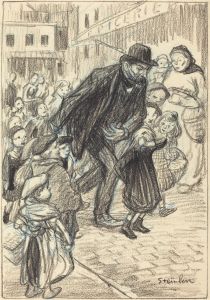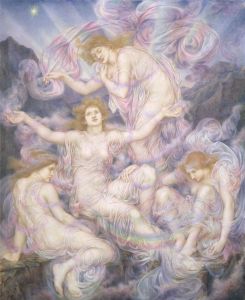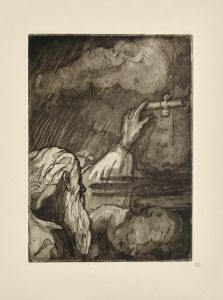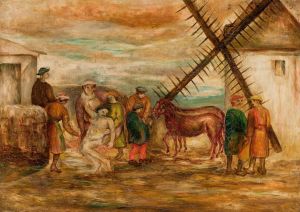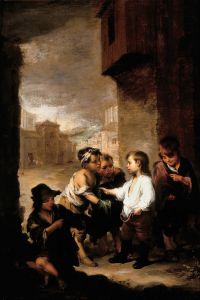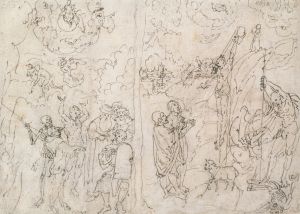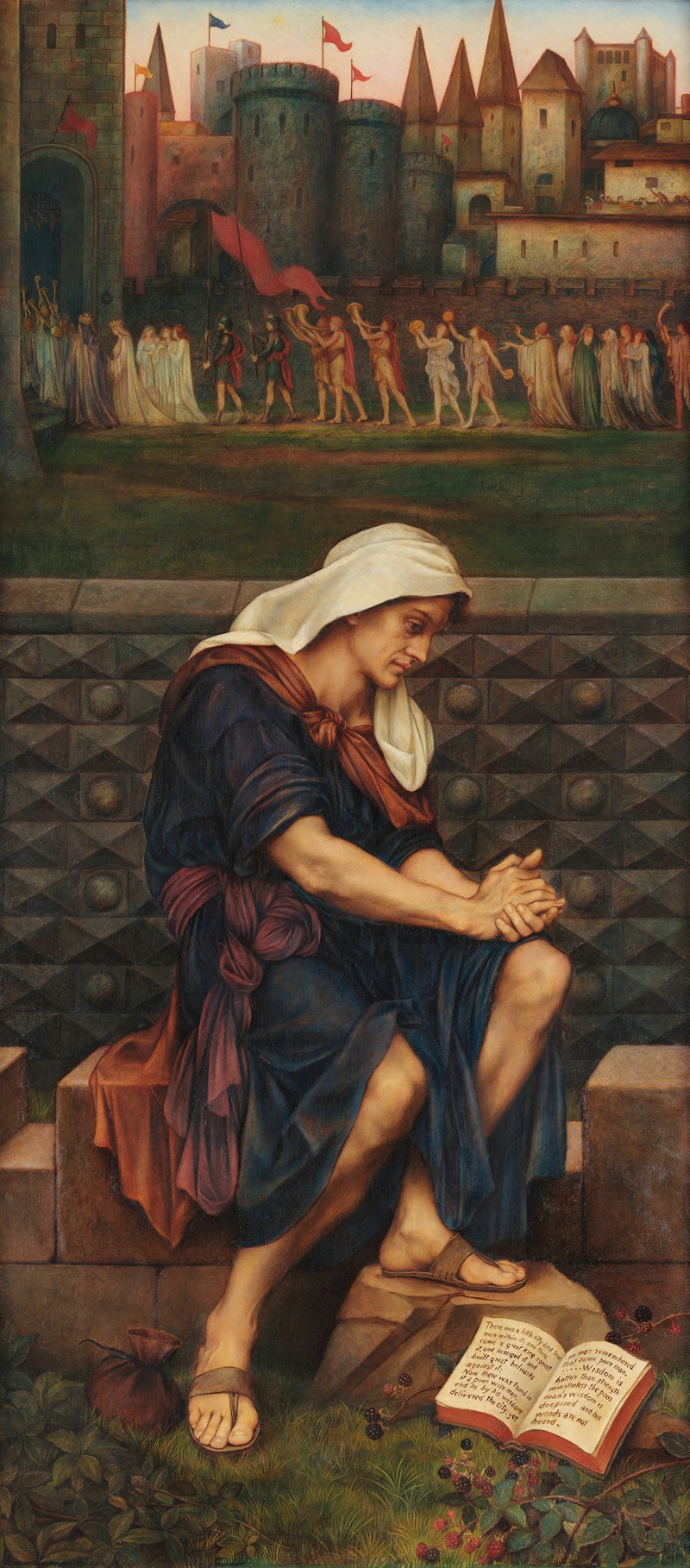
The Poor Man who Saved the City
A hand-painted replica of Evelyn De Morgan’s masterpiece The Poor Man who Saved the City, meticulously crafted by professional artists to capture the true essence of the original. Each piece is created with museum-quality canvas and rare mineral pigments, carefully painted by experienced artists with delicate brushstrokes and rich, layered colors to perfectly recreate the texture of the original artwork. Unlike machine-printed reproductions, this hand-painted version brings the painting to life, infused with the artist’s emotions and skill in every stroke. Whether for personal collection or home decoration, it instantly elevates the artistic atmosphere of any space.
Evelyn De Morgan's painting "The Poor Man who Saved the City" is an intriguing work of art that reflects the artist's engagement with themes of heroism, morality, and social justice. De Morgan, a prominent English painter associated with the Pre-Raphaelite movement, was known for her allegorical and symbolic works that often conveyed deep moral and philosophical messages.
"The Poor Man who Saved the City" was completed in 1901, a period when De Morgan was deeply involved in exploring themes of social consciousness and reform. The painting is an allegorical representation, which was a common approach in De Morgan's oeuvre, allowing her to convey complex narratives and moral lessons through her art.
The painting depicts a scene inspired by a story from classical antiquity, although the specific source of the narrative is not explicitly documented. It portrays a humble figure, presumably the "poor man," who is central to the composition. The setting suggests a city under threat, with architectural elements and figures that imply a sense of urgency and crisis. The poor man, despite his modest appearance, is depicted with a sense of dignity and purpose, suggesting his pivotal role in saving the city.
De Morgan's use of color and composition in this work is notable. She employs a rich palette, with vibrant hues that draw attention to the central figure and the surrounding drama. The artist's characteristic attention to detail is evident in the intricate rendering of the figures and the architectural elements, which contribute to the narrative depth of the painting.
The painting reflects De Morgan's interest in social themes and her belief in the power of individual action and moral integrity. It can be seen as a commentary on the potential for ordinary individuals to effect significant change, a theme that resonates with the social and political movements of her time. De Morgan was known for her progressive views, including her support for women's suffrage and social reform, and these beliefs often informed her artistic work.
"The Poor Man who Saved the City" is housed in the De Morgan Collection, which is dedicated to the works of Evelyn De Morgan and her husband, the ceramicist William De Morgan. The collection provides insight into the couple's artistic achievements and their contributions to the arts and crafts movement in England.
Overall, "The Poor Man who Saved the City" exemplifies Evelyn De Morgan's skill as a painter and her commitment to using art as a medium for social commentary. Through this work, she invites viewers to reflect on the themes of heroism, sacrifice, and the impact of individual actions on the broader community.





